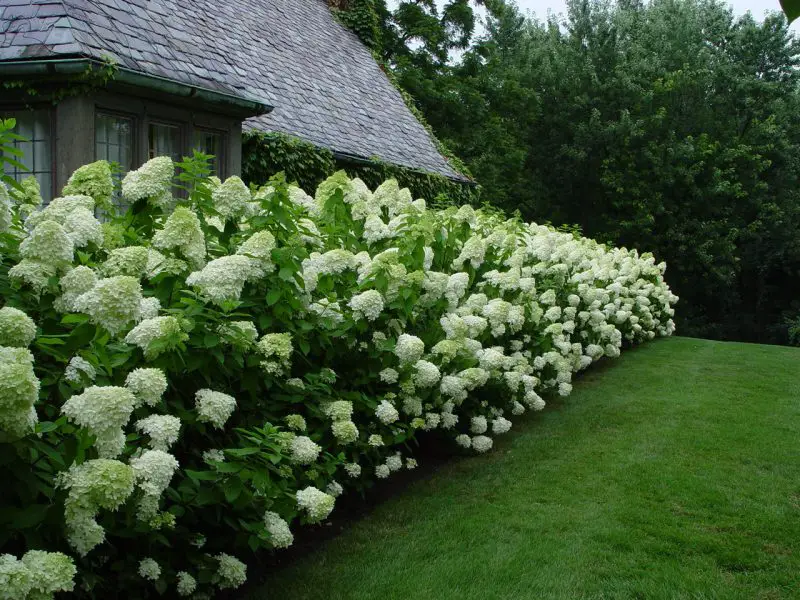Limelight hydrangea is a stunning flowering shrub prized for its large, cone-shaped blooms that shift in color from creamy white to pinkish-red as the season progresses. Many gardeners adore this hardy plant for its ability to thrive in different conditions, but achieving those big, vibrant flower heads depends largely on proper pruning. Knowing when and how to trim your limelight hydrangea can mean the difference between an ordinary display and a breathtaking burst of blossoms.
Pruning at the right time encourages healthy growth, strengthens the plant’s structure, and stimulates the development of more robust flower clusters. On the other hand, improper timing can reduce bloom size, delay flowering, or even cause the plant to skip blooming altogether. Understanding the growth habits of limelight hydrangeas and their blooming cycle is crucial if you want to enjoy bigger and better blooms each year.
Table of Contents
Understanding the Growth Pattern of Limelight Hydrangeas

Before deciding when to trim a limelight hydrangea, it is essential to understand how it grows and produces flowers. Unlike some other hydrangea varieties that bloom on old wood, limelight hydrangeas bloom on new wood. This means that the flowers develop on the current season’s growth rather than on last year’s stems.
Because of this growth habit, pruning does not risk removing flower buds that have already formed. Instead, cutting back the shrub stimulates new stem growth, which will carry the upcoming season’s blooms. This is why limelight hydrangeas are so forgiving compared to other hydrangea varieties. With the right timing, you can encourage vigorous new shoots that produce larger and more abundant flowers.
Limelight hydrangeas are also fast growers, capable of reaching six to eight feet in height and width when fully mature. Without regular pruning, the plant can become too dense, which limits air circulation and reduces flower quality. Proper trimming opens up the center of the plant, allowing sunlight and air to reach all parts, which directly contributes to healthier, more vibrant blossoms.
The Best Time to Trim Limelight Hydrangeas
Timing is everything when it comes to trimming limelight hydrangeas. Since they bloom on new wood, the best time to prune is in late winter or early spring, before new growth begins. This period, typically between February and early April depending on your climate, allows the plant to focus its energy on producing strong, healthy shoots that will carry larger flower heads later in the season.
Trimming too early, especially in mid-winter, can expose the plant to cold damage if severe frost returns. Waiting too long, after new growth has already started, can remove young shoots that would have developed flowers. Therefore, pruning during that transitional window when the plant is still dormant but before active growth begins is ideal for maximizing bloom potential.
Some gardeners choose to trim lightly in late autumn after the flowers fade to maintain a neat appearance, but heavy pruning should always be left for late winter or early spring. Removing old blooms and damaged branches in autumn can reduce the risk of snow damage, but major shaping and cutting should be done just before the new growing season begins.
How Much to Trim for Maximum Flower Production
While timing is critical, the amount you trim also plays a significant role in determining bloom quality. Because limelight hydrangeas bloom on new wood, cutting them back encourages strong new stems. However, cutting too severely can stress the plant, while trimming too lightly may lead to smaller, weaker flowers.
The general rule for encouraging bigger blooms is to trim the shrub by about one-third of its total height. This method stimulates vigorous growth without overly stressing the plant. Cutting back older, thicker stems closer to the base helps rejuvenate the shrub and redirects energy to younger stems, which typically produce the largest flowers.
For gardeners who want even larger but fewer flower clusters, cutting the shrub back more aggressively, even by half its height, can result in fewer but show-stopping blooms. However, this approach should only be done on well-established, healthy plants to prevent weakening the root system.
Encouraging Strong New Growth After Trimming
Pruning is only part of the process of achieving big, beautiful blooms. Proper aftercare following trimming is essential for encouraging strong new growth. Once you have pruned your limelight hydrangea, providing it with nutrient-rich soil, consistent watering, and proper sunlight will help it recover quickly and produce healthy stems.
Applying a slow-release balanced fertilizer in early spring after pruning can supply essential nutrients for strong growth. A fertilizer with slightly higher phosphorus content can also promote larger flower development. Maintaining even soil moisture, especially during dry spells, ensures that the plant does not experience stress, which can reduce bloom size.
Mulching around the base of the plant helps conserve soil moisture, regulate temperature, and prevent weed competition. A two to three-inch layer of organic mulch such as shredded bark or compost works best, keeping the soil conditions ideal for robust growth.
Why Pruning Affects Bloom Size and Quality
Pruning directly influences bloom size because it controls how the plant allocates its energy. When you remove old or weak stems, the plant redirects nutrients and water to the remaining stems, resulting in stronger growth and larger flower heads. Thinning out crowded areas also improves air circulation and sunlight penetration, both of which contribute to better flower quality.
Additionally, pruning encourages the growth of new shoots that are capable of supporting larger blooms. Left untrimmed, limelight hydrangeas can develop too many stems, leading to smaller, weaker flowers because the plant spreads its energy across too many growth points. Strategic trimming helps concentrate the plant’s energy where it matters most.
Common Mistakes When Trimming Limelight Hydrangeas
One common mistake gardeners make is trimming at the wrong time, especially late in the growing season after new growth has already emerged. Cutting back too late in spring or summer removes the shoots that will produce flowers, resulting in fewer blooms that year.
Another mistake is over-pruning young or newly planted hydrangeas. Young plants need time to establish their root systems before being subjected to heavy trimming. Light pruning to remove dead or damaged stems is fine, but heavy shaping should wait until the plant is at least two years old.
Some gardeners also make the mistake of cutting too lightly, leaving too many old stems, which results in smaller, less impressive flower heads. Knowing how much to cut and focusing on older, woodier stems encourages healthier, stronger growth.
Preparing Limelight Hydrangeas for Winter After Trimming
Although major pruning is best done in late winter or early spring, some light maintenance in late autumn can help prepare your limelight hydrangea for winter. Removing dried flower heads before heavy snowfalls can prevent the weight of snow from breaking stems. However, leaving some old growth intact helps protect the plant’s crown during cold weather.
Adding a layer of mulch around the base before winter helps insulate the roots from extreme cold. In colder climates, gardeners sometimes wrap the base with burlap to provide additional protection, especially for young plants.
FAQs About Trimming Limelight Hydrangeas
When Is the Best Time to Trim Limelight Hydrangeas?
The best time to trim limelight hydrangeas is in late winter or early spring, just before new growth begins. Pruning during this dormant period encourages stronger stems and bigger blooms for the upcoming season.
How Much Should You Trim for Larger Blooms?
Trimming about one-third of the plant’s total height is ideal for producing larger, healthier blooms. Cutting back older, thicker stems allows the plant to channel energy into new shoots that produce vibrant flower clusters.
Can You Trim Limelight Hydrangeas in the Fall?
Light trimming in the fall is acceptable to remove faded blooms or damaged stems, but heavy pruning should wait until late winter or early spring to avoid removing potential new growth.
Will Pruning Too Late Affect Flower Production?
Yes, pruning too late in spring or after new growth starts can remove the shoots that produce flowers. This mistake can lead to fewer or smaller blooms during the flowering season.
Do Limelight Hydrangeas Bloom on Old or New Wood?
Limelight hydrangeas bloom on new wood, which means their flowers grow on stems produced during the current season. This growth habit makes them more forgiving of pruning compared to varieties that bloom on old wood.
Conclusion
Trimming limelight hydrangeas at the right time is essential for achieving bigger and better blooms. Because these hydrangeas flower on new wood, pruning in late winter or early spring stimulates vigorous growth and encourages the development of large, vibrant flower clusters. Cutting back by about one-third of the plant’s height, focusing on older stems, and providing proper aftercare ensures healthy growth and stunning blooms throughout the season.
Avoiding common mistakes, such as pruning too late or too lightly, can make a significant difference in flower quality. With the right timing, proper technique, and consistent care, your limelight hydrangea can reward you with breathtaking, show-stopping blooms year after year.






